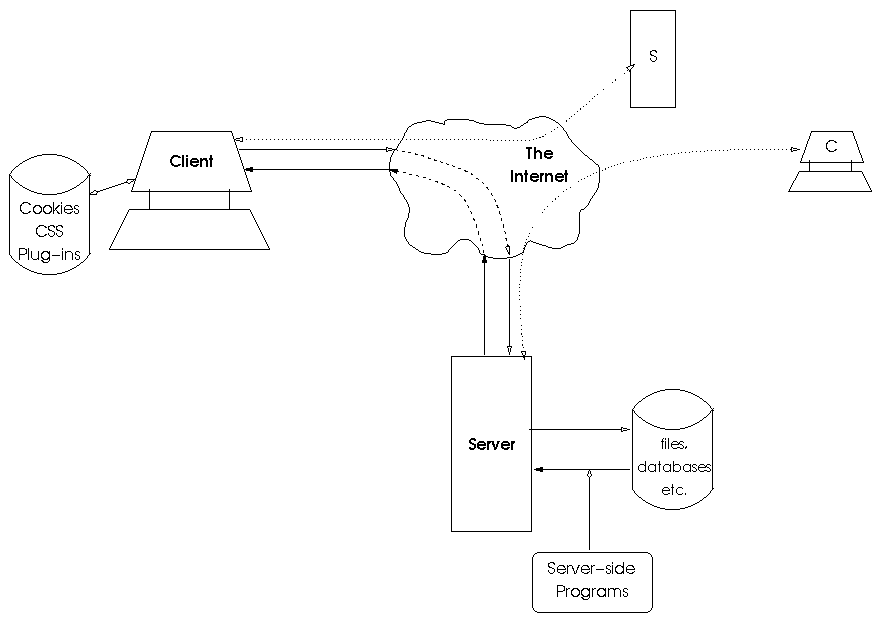CS4173 > Course > Topics > client/server architecture
J. Blustein
Basic Client/Server WWW Model
Here is a diagram and description of the basic WWW
client/server model which you must understand. The diagram is similar to
Fig. P.1 (on page xviii) of your
textbook (XHTML 1.0 Web Development Sourcebook by Ian S. Graham).

There are three main parts of the diagram: the client, the server, and the Internet. Other servers and clients are also
pictured, to indicate that the client can connect to other servers
and the server can be connected to by other clients.
The Internet is represented as a cloud (to indicate that it does not
have a statically defined size or shape). Clients send requests to
servers through the Internet, and servers send replies to clients
through the Internet.
- The client is represented by an old-style terminal (a monitor
attached to a keyboard) with external storage.
- The client is connected to external storage (represented by a
hard drive) which can contain: cookies, plug-ins (e.g. Flash Macromedia™),
client-side CSS
rules, etc.
- The client initiates all transactions and can block
(i.e. wait for a response).
- The server is represented by a computer connected to the
Internet and its own external storage.
- The server's external storage contains: files to be sent when
requested by a client
- Often the files that are requested by clients are sent without
any changes. But sometimes the files are altered (using
technologies such as SSI) and sometimes the files are treated as
instructions that must be executed to generate output which is
sent to the client as though it was a file (using technologies
such as CGI).
To show that these technologies can affect the data that the
server transmits, the arrow back to the client (through the
Internet) is intercepted by the various technologies that can
act on the data being transmitted.
- The server never initiates transactions, and rarely blocks
(i.e. it handles requests as soon as it
gets them).
- Version:
- 04 November 2001
- CS 4173 Prof:
- J. Blustein
<jamie@cs.dal.ca>


